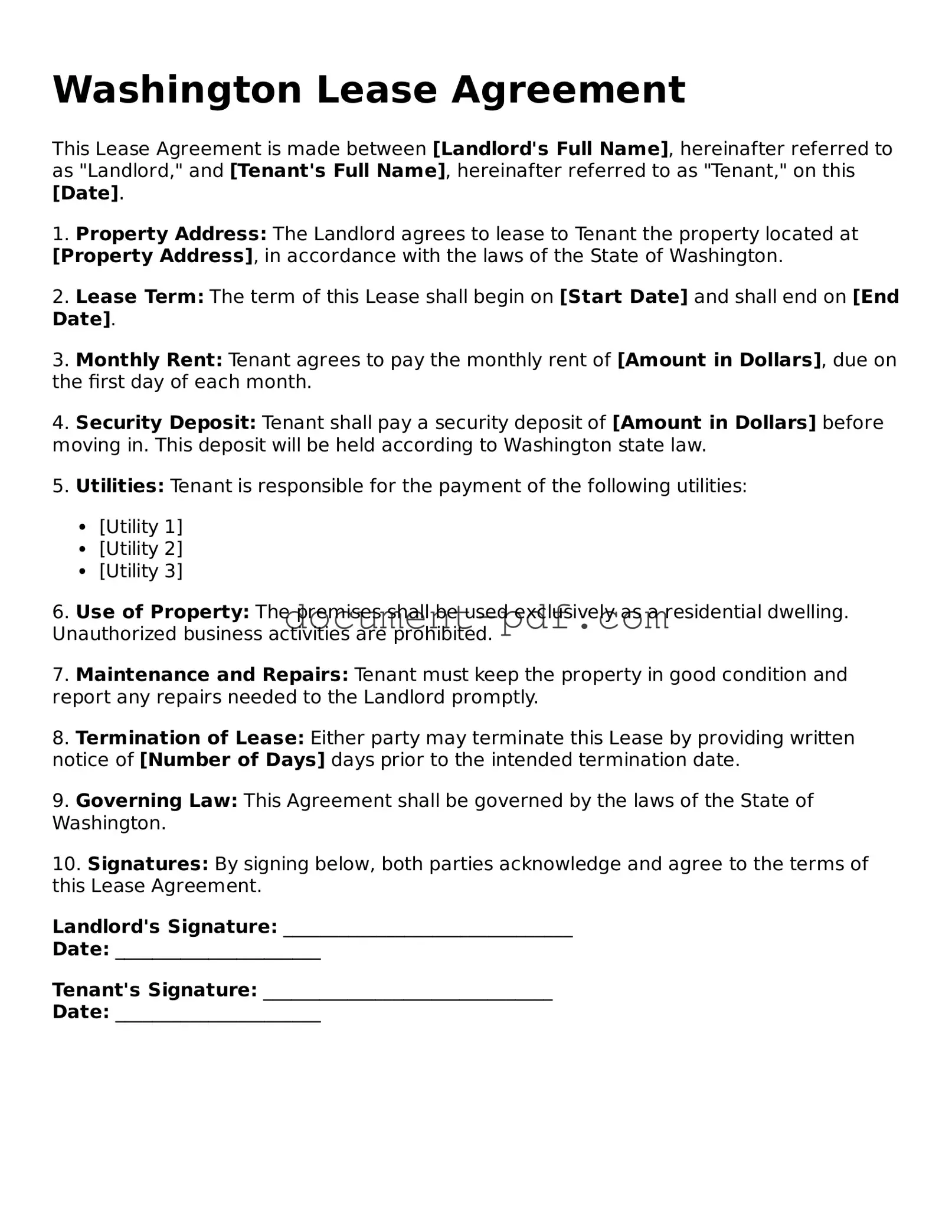Washington Lease Agreement
This Lease Agreement is made between [Landlord's Full Name], hereinafter referred to as "Landlord," and [Tenant's Full Name], hereinafter referred to as "Tenant," on this [Date].
1. Property Address: The Landlord agrees to lease to Tenant the property located at [Property Address], in accordance with the laws of the State of Washington.
2. Lease Term: The term of this Lease shall begin on [Start Date] and shall end on [End Date].
3. Monthly Rent: Tenant agrees to pay the monthly rent of [Amount in Dollars], due on the first day of each month.
4. Security Deposit: Tenant shall pay a security deposit of [Amount in Dollars] before moving in. This deposit will be held according to Washington state law.
5. Utilities: Tenant is responsible for the payment of the following utilities:
- [Utility 1]
- [Utility 2]
- [Utility 3]
6. Use of Property: The premises shall be used exclusively as a residential dwelling. Unauthorized business activities are prohibited.
7. Maintenance and Repairs: Tenant must keep the property in good condition and report any repairs needed to the Landlord promptly.
8. Termination of Lease: Either party may terminate this Lease by providing written notice of [Number of Days] days prior to the intended termination date.
9. Governing Law: This Agreement shall be governed by the laws of the State of Washington.
10. Signatures: By signing below, both parties acknowledge and agree to the terms of this Lease Agreement.
Landlord's Signature: _______________________________
Date: ______________________
Tenant's Signature: _______________________________
Date: ______________________
